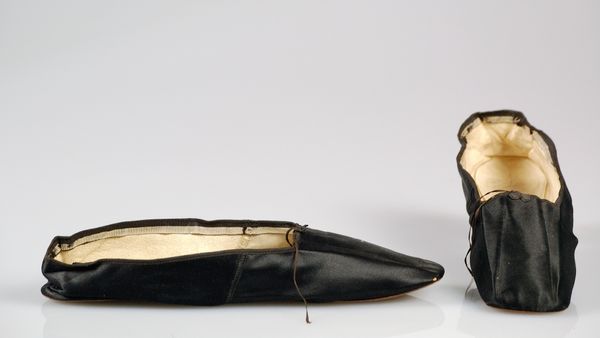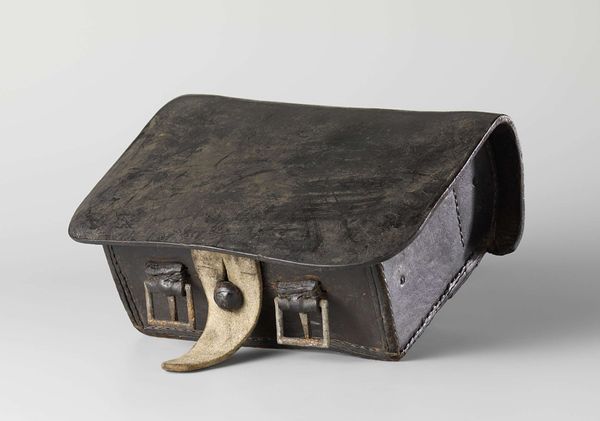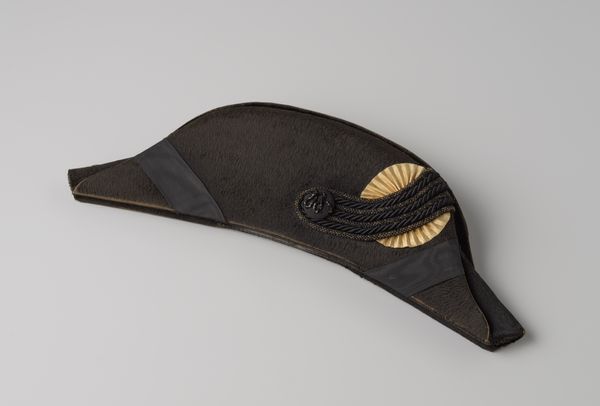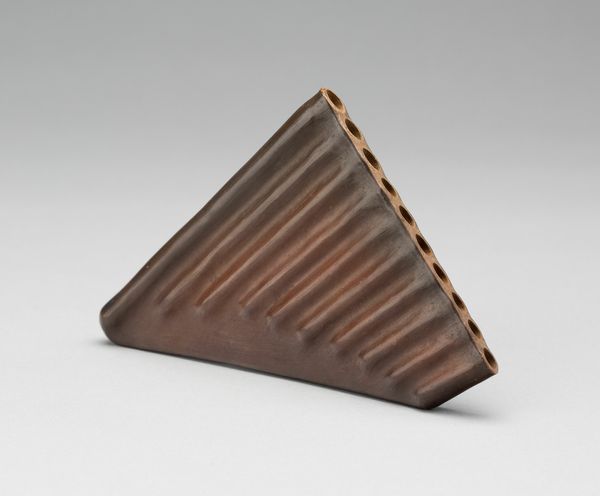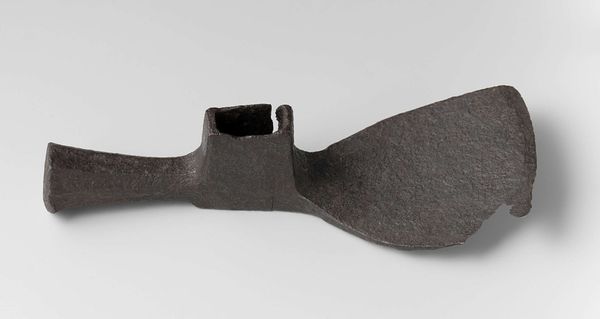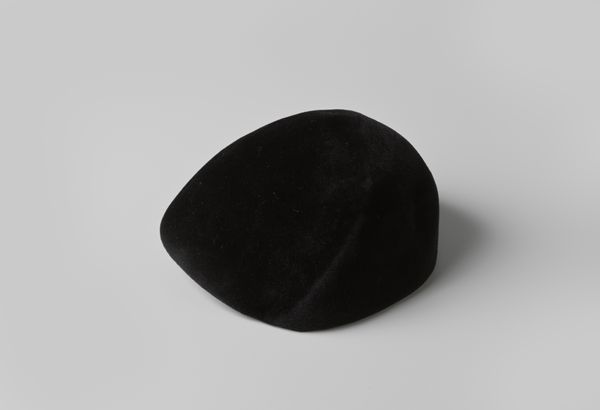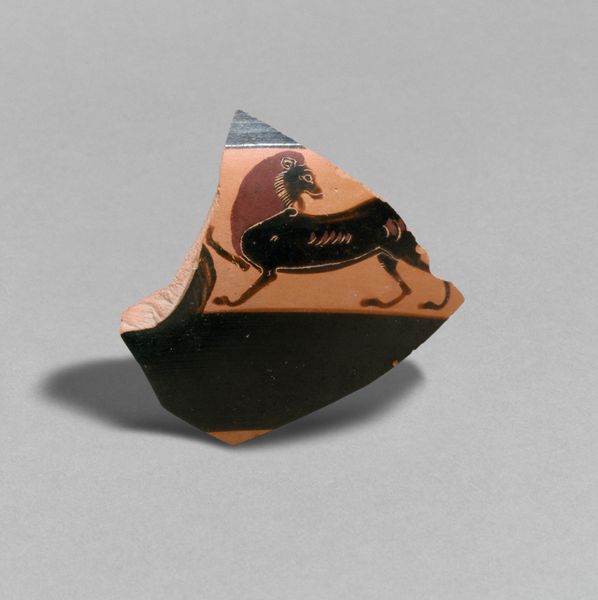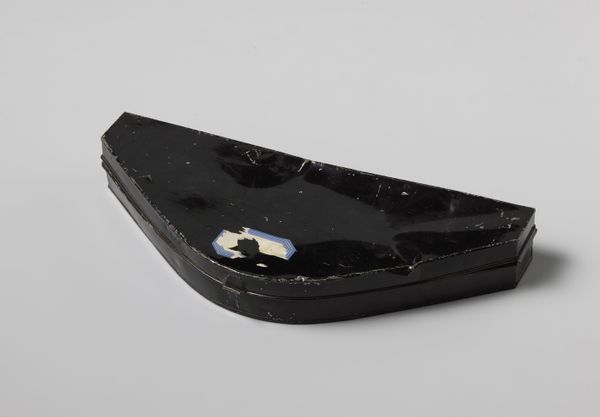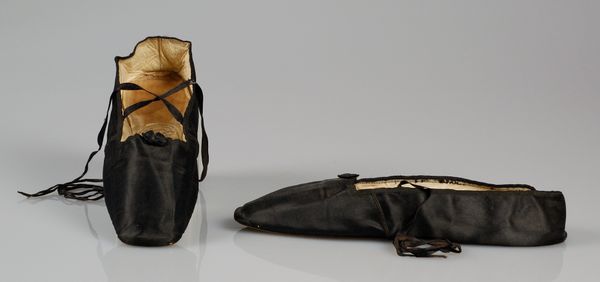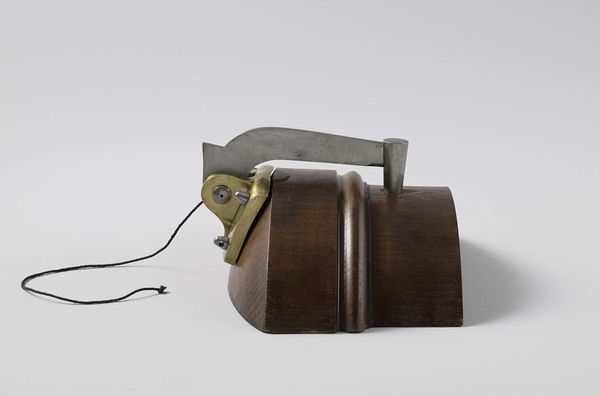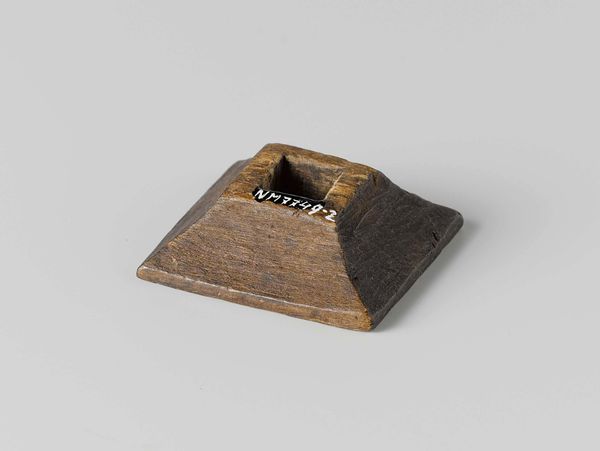
photography
#
photography
#
geometric
Dimensions: length 100 cm, diameter 48 cm, weight 17.2 kg
Copyright: Rijks Museum: Open Domain
Curator: Standing before us, we have a photograph titled "Anchor Buoy," estimated to have been taken between 1820 and 1840. Editor: My first impression is one of subdued solidity. It's strangely…grounded, considering its intended purpose on water. The light makes it appear almost weighty. Curator: Indeed. The buoy's shape – a sort of truncated cone – hints at its symbolic role as a steadfast marker, something we return to, or rely on. Editor: Exactly! It’s a symbolic tether, linking the seen world above the waves with the unseen, anchoring what could drift away. Even that rough, tangled rope hints at all it has been through, holding on for dear life against tides. Curator: Consider, too, how these buoys guided ships into harbors, representing safety and a return. Geometrically, the cone itself carries potent connotations – pointing either to stability when based on its circular base, or alternatively toward the unknown with its sharp peak, into darker, inaccessible deeps. Editor: You’re right; it's this inherent duality. Like an anchor holding something to the seabed, but still floating... caught between two realms. What I also find really interesting, perhaps from my land-lubber's perspective, is that you only see it in this drained color palette. What it gains in visual stillness and historical dignity, it loses, ironically, in its capacity to brightly denote. Curator: The photographic medium also shifts our understanding of it. Stripped of the polychromatic environment of sea and sky, and elevated, literally, onto a different, clean platform. This isolation prompts deeper considerations on the symbol itself. Editor: It does make you wonder about how its functionality is entwined with all of our psychological needs for security and belonging. Not a particularly lively looking photo. But you can still sense this object embodies whole experiences - not just of its own hard usage in marine environment but the accumulated human experiences tied up with it. Thanks, in particular, for decoding a symbolic visual message, beyond face value. Curator: A pleasure. It is images like this that invite a second, deeper observation – hopefully illuminating new paths and patterns of reflection for our listeners.
Comments
rijksmuseum over 2 years ago
⋮
An anchor buoy was floated on the water’s surface to prevent other ships from sailing over the anchor chain of a moored ship. It also marked the location of the anchor and allowed it to be recovered if the cable broke or had to be cut. This anchor buoy, designed by the Englishman George Stebbing, was lighter and had a longer life than those previously used.
Join the conversation
Join millions of artists and users on Artera today and experience the ultimate creative platform.

